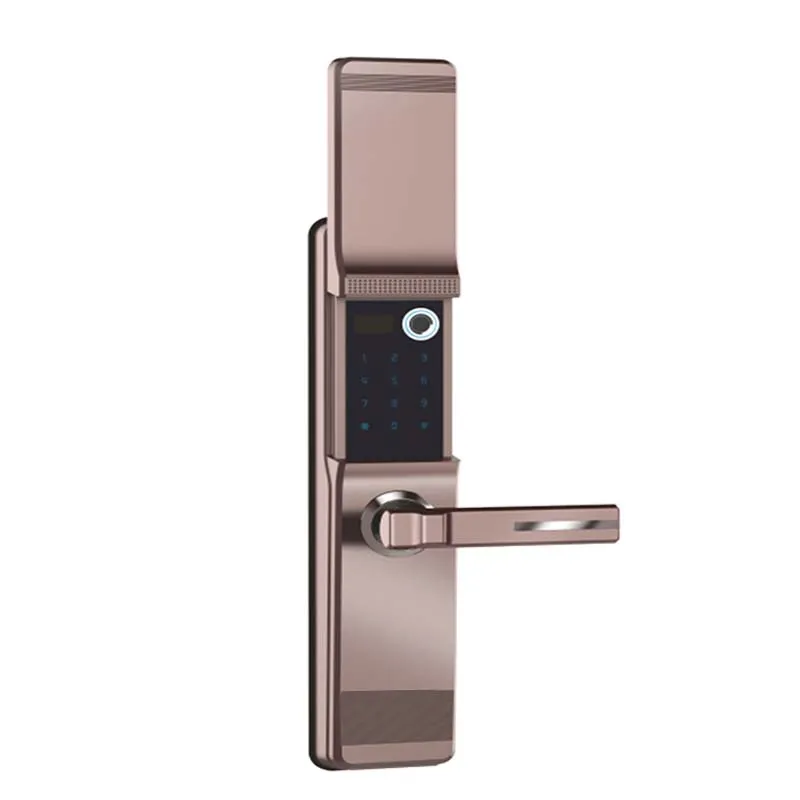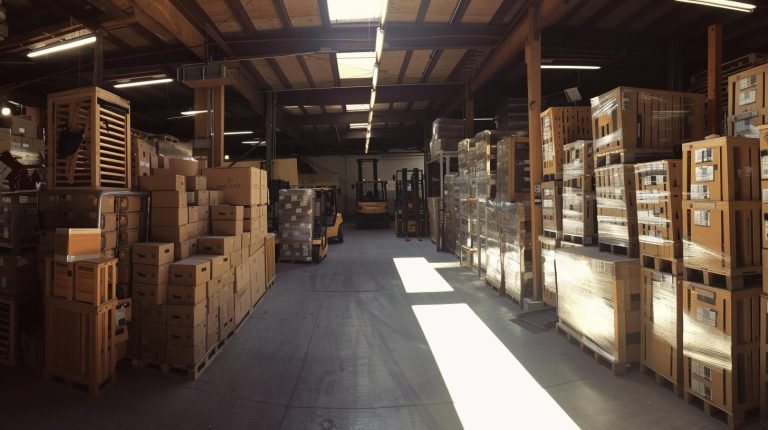Is your home's security keeping pace with modern threats? Choosing the right door lock can dramatically enhance both security and convenience. This article dives deep into the various types of door locks available, from traditional deadbolts to cutting-edge smart locks, helping you make an informed decision for your home. Whether you're a DIY enthusiast or a small contractor, understanding these options will not only safeguard your property but also streamline your project. Ready to upgrade your home security? Let's explore the best door locks to fit your needs.
Different Types of Door Locks and Their Uses
Choosing the right door lock is crucial for both security and convenience. The type of lock you select can significantly impact the safety of your home and ease of access. Each type of door lock offers unique features tailored to specific needs, making it essential to understand their uses and benefits.
Deadbolts are among the most secure options available, typically used on exterior doors. They provide enhanced security by extending a solid metal bolt into the door frame, making it difficult for intruders to force entry. Deadbolts are commonly used on front and back doors where maximum security is a priority. Keypad door locks, on the other hand, allow for keyless entry, offering convenience for busy households. These locks enable users to enter a code instead of using a physical key, which can be particularly useful for families with children or for those who frequently misplace their keys.
Sliding door locks are essential for securing patio doors and can come in various forms, such as bars or foot-activated locks. These locks help prevent unauthorized access through sliding glass doors, often considered a weak point in home security. Keyless entry door locks eliminate the need for physical keys, enhancing both security and convenience. These locks can be operated via a smartphone app, biometric scan, or keypad, making them ideal for tech-savvy users who prefer modern security solutions.
Typical scenarios for using these locks include:
- Deadbolts: Ideal for exterior doors requiring maximum security.
- Keypad Door Locks: Perfect for households needing easy, keyless access.
- Sliding Door Locks: Essential for securing patio or balcony doors.
- Keyless Entry Door Locks: Suitable for homes integrating smart technology.
- Biometric Locks: Best for users seeking advanced security with fingerprint access.
- Deadbolts: Enhanced security for exterior doors.
- Keypad Door Locks: Convenient, keyless access for busy households.
- Sliding Door Locks: Secure patio and balcony doors.
- Keyless Entry Door Locks: Modern convenience and security.
- Biometric Locks: Advanced security with fingerprint access.
Security Features to Look for in Door Locks

When selecting security door locks, it is crucial to consider their ratings and certifications. ANSI/BHMA ratings are essential as they ensure the lock meets specific security standards. These ratings are categorized into three grades: Grade 1, Grade 2, and Grade 3. Grade 1 locks provide the highest level of security and are often used in commercial settings, while Grade 2 and Grade 3 are suitable for residential use, with Grade 2 offering a higher level of protection than Grade 3.
Specific features such as anti-drill, anti-pick, and anti-bump mechanisms add an extra layer of security to door locks. Anti-drill features protect the lock from being tampered with using drill attacks, which is a common method used by burglars. Anti-pick mechanisms prevent the lock from being picked, a technique often employed by intruders using specialized tools. Anti-bump features protect against lock bumping, a method where a bump key is used to bypass the lock's tumbler mechanism.
Heavy-duty locks provide enhanced resistance to physical attacks, making them an ideal choice for high-security needs. These locks are designed to withstand significant force and are often constructed from robust materials such as hardened steel. Examples of heavy-duty locks include deadbolts with reinforced strike plates and high-security padlocks. These locks are beneficial for securing entry points that require maximum protection, such as front doors and gates.
|Feature|Description|
|—|—|
|ANSI/BHMA Ratings|Ensure the lock meets security standards; Grade 1 is the highest.|
|Anti-Drill|Protects the lock from being tampered with using drills.|
|Anti-Pick|Prevents the lock from being picked with specialized tools.|
|Anti-Bump|Protects against lock bumping using bump keys.|
|Heavy-Duty Construction|Enhanced resistance to physical attacks, often made from hardened steel.|
Smart Door Locks: The Future of Home Security
Smart door locks offer a significant leap in home security and convenience by integrating advanced technology features. These locks can be controlled via smartphone apps, enabling remote access and monitoring. Homeowners can lock or unlock their doors from anywhere, providing peace of mind and eliminating the need for physical keys. Additionally, smart locks often integrate seamlessly with smart home systems, allowing for automation and enhanced control over home security.
One of the standout features of smart locks is biometric security, particularly fingerprint door locks. These locks use fingerprint recognition to grant access, ensuring that only authorized users can enter the home. This advanced level of security is not only convenient but also highly reliable, as fingerprints are unique to each individual. Other features include activity logs, which keep track of who enters and exits the home, and temporary codes that can be issued to guests. This flexibility makes smart locks an ideal choice for busy households and those who frequently host visitors.
Popular smart lock models include the August Smart Lock Pro, which offers features like remote access and integration with Amazon Alexa, Google Assistant, and Apple HomeKit. Another example is the Schlage Encode Smart WiFi Deadbolt, which features built-in WiFi for direct connectivity and remote management without the need for additional hubs. The Ultraloq U-Bolt Pro is another notable model, offering multiple access methods such as fingerprint, code, smartphone, and mechanical key.
Key features of smart door locks:
- Remote Access: Control locks from anywhere using smartphone apps.
- Biometric Security: Fingerprint recognition for authorized access.
- Integration with Smart Home Systems: Seamless connectivity with home automation devices.
- Activity Logs: Track entries and exits for enhanced security.
- Temporary Codes: Issue time-limited access codes for guests.
How to Install Different Types of Door Locks

Installing a door lock involves a few essential tools and materials, including a screwdriver, drill, tape measure, pencil, and the new lock. The general process starts by removing the old lock, which typically requires unscrewing the existing hardware and carefully extracting the lock mechanism. Once the old lock is removed, it's crucial to measure and mark the positions for the new lock's components. This ensures proper alignment and functionality. For deadbolt installation, drilling precise holes for the bolt and strike plate is necessary. Keypad and electronic locks often come with detailed installation instructions and templates to simplify the process.
Specific steps for different types of locks vary slightly. Deadbolt installation requires creating holes in the door and frame to house the bolt and strike plate. This process involves drilling a hole through the door's edge for the bolt and a corresponding hole in the door frame for the strike plate. Keypad and electronic locks usually come with a template to guide the placement of the lock's components, making it easier to drill the necessary holes accurately. Once the holes are prepared, fitting the new lock involves securing the hardware in place and ensuring the lock operates smoothly. Testing the functionality is the final step, ensuring that the lock engages and disengages correctly.
- Gather necessary tools and materials.
- Remove the old lock.
- Measure and mark holes for the new lock.
- Drill holes as needed.
- Install the new lock and test functionality.
Top Brands for Door Locks
When considering door locks, several top brands stand out for their quality, innovation, and reliability. Schlage, Kwikset, and Yale are among the most reputable names in the industry, each offering a range of products that cater to different security needs and preferences. These brands have built their reputations on delivering high-security solutions, from traditional deadbolts to advanced smart locks.
Schlage is known for its wide variety of high-security locks, including both smart locks and traditional deadbolts. Their products are designed to offer robust security while providing user-friendly features. Kwikset, on the other hand, is renowned for its innovative SmartKey technology, which allows homeowners to re-key their locks easily without the need for a locksmith. This feature adds a layer of convenience and enhances security by allowing users to change their keys quickly. Yale is another leading brand, famous for its advanced smart locks that include features like touchscreen keypads and seamless integration with home automation systems. These locks offer both high security and modern conveniences, making them a popular choice for tech-savvy homeowners.
Unique features and popular models:
Schlage
- Wide range of high-security locks
- Smart locks with user-friendly features
- Traditional deadbolts
Kwikset
- SmartKey technology for easy re-keying
- Innovative design and security
- Variety of styles and finishes
Yale
- Advanced smart locks with touchscreen keypads
- Integration with home automation systems
- High security and modern convenience
Buying Guide: How to Choose the Best Door Locks

Selecting the best door locks begins with evaluating the level of security required based on the door’s location. Front door locks demand robust security features as they are the primary entry points. High-security options like deadbolts or smart locks with advanced encryption are ideal for these areas. In contrast, interior doors might only need basic locks for privacy. Understanding the security needs of each door helps in making an informed decision.
User-friendliness is another critical factor, especially for keyless and smart locks. Locks that offer easy installation and straightforward operation can significantly enhance convenience. Keyless entry systems, such as keypad locks or smart locks controlled via smartphone apps, eliminate the need for physical keys and reduce the hassle of misplaced keys. These systems are particularly beneficial for busy households, providing quick and secure access.
Compatibility with existing door hardware and home automation systems is also vital. Ensuring that the new lock integrates seamlessly with current setups can save time and prevent potential complications. For smart home enthusiasts, compatibility with systems like Amazon Alexa, Google Assistant, or Apple HomeKit allows for enhanced control and automation. This integration not only improves security but also adds a layer of convenience through features like remote access and voice commands.
Key considerations when choosing door locks:
- Security Level: Match the lock type to the door’s security needs.
- Ease of Use: Opt for locks that are user-friendly and easy to install.
- Compatibility: Ensure the lock works with existing hardware and home systems.
- Technology Integration: Look for smart locks that integrate with home automation.
- Durability: Choose locks made from high-quality materials for long-lasting security.
Final Words
Choosing the right door locks is crucial for home security and convenience. Deadbolts offer robust protection for exterior doors, while keypad and keyless entry locks enhance ease of access. Sliding door locks secure patio entries effectively.
Understanding security features like anti-drill and anti-pick mechanisms can help in selecting the best locks. Smart locks bring future-forward benefits with remote access and biometric security.
Proper installation is essential for functionality. Refer to top brands like Schlage, Kwikset, and Yale for quality options. Make informed decisions to achieve optimal safety and peace of mind in your home.
FAQ
What kind of door lock is most secure?
Deadbolts are the most secure type of door lock, especially for exterior doors, due to their robust design and resistance to force.
What is the hardest door lock to pick?
High-security locks with anti-pick mechanisms, such as those with spool pins and complex keyways, are the hardest to pick.
What is the most common house door lock?
The most common house door lock is the cylindrical knob lock, which combines a knob with an internal locking mechanism.
What bedroom door locks cannot be picked?
Bedroom door locks with high-security features like anti-pick pins and secure keyways are difficult to pick, providing extra privacy and security.





